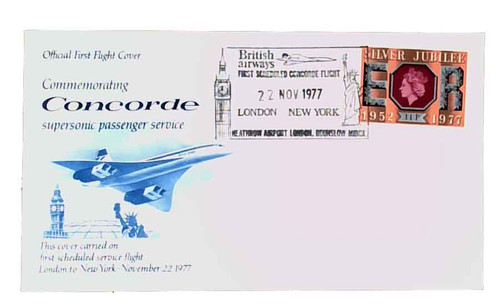
# 92107 - 1977 Cover Great White Fleet
Â
Roosevelt’s Great White FleetÂ
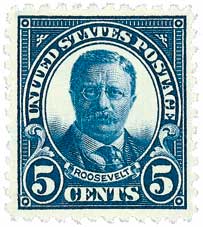
On December 16, 1907, Theodore Roosevelt’s Great White Fleet departed the United States for a 434-day journey around the globe to demonstrate America’s sea power.
The practice of sending naval ships to other countries wasn’t a new one. It was common practice in the 1800s to send ships for the birthdays of monarchs or other foreign celebrations.
In the case of the Great White Fleet, Roosevelt had many reasons. He wanted to show the US and the world that America was a major sea power. Additionally, since Japan had recently emerged as another significant sea power, he wanted the fleet to demonstrate to them that America’s Navy could go anywhere from any of its ports to defend the nation’s interests. On the home front, Roosevelt hoped the fleet would distract Americans from the economic depression at the time and rouse patriotism. The journey would also give the fleet more experience in navigation, communication, coal use, and maneuvering.
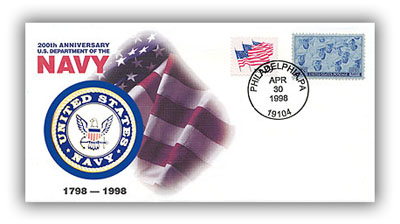
The Great White Fleet consisted of 16 battleships and several auxiliary ships. The ships were painted white with gilded bows. On December 16, 1907, President Roosevelt oversaw the fleet’s departing from Hampton Roads, Virginia. Roosevelt stood on the deck of the presidential yacht Mayflower as the ships passed. Many more people watched from the shore as the song “The Girl I Left Behind Me†played.
Interestingly, Roosevelt hadn’t made his plan for the fleet to travel the globe public until shortly after the fleet departed. Once other nations learned of this, they quickly sent invitations for the fleet to visit their ports. The fleet first went to the South Atlantic and made its first visit at Port of Spain in Trinidad on December 23. On January 6, the fleet crossed the equator and ships held a number of costumed initiation ceremonies.
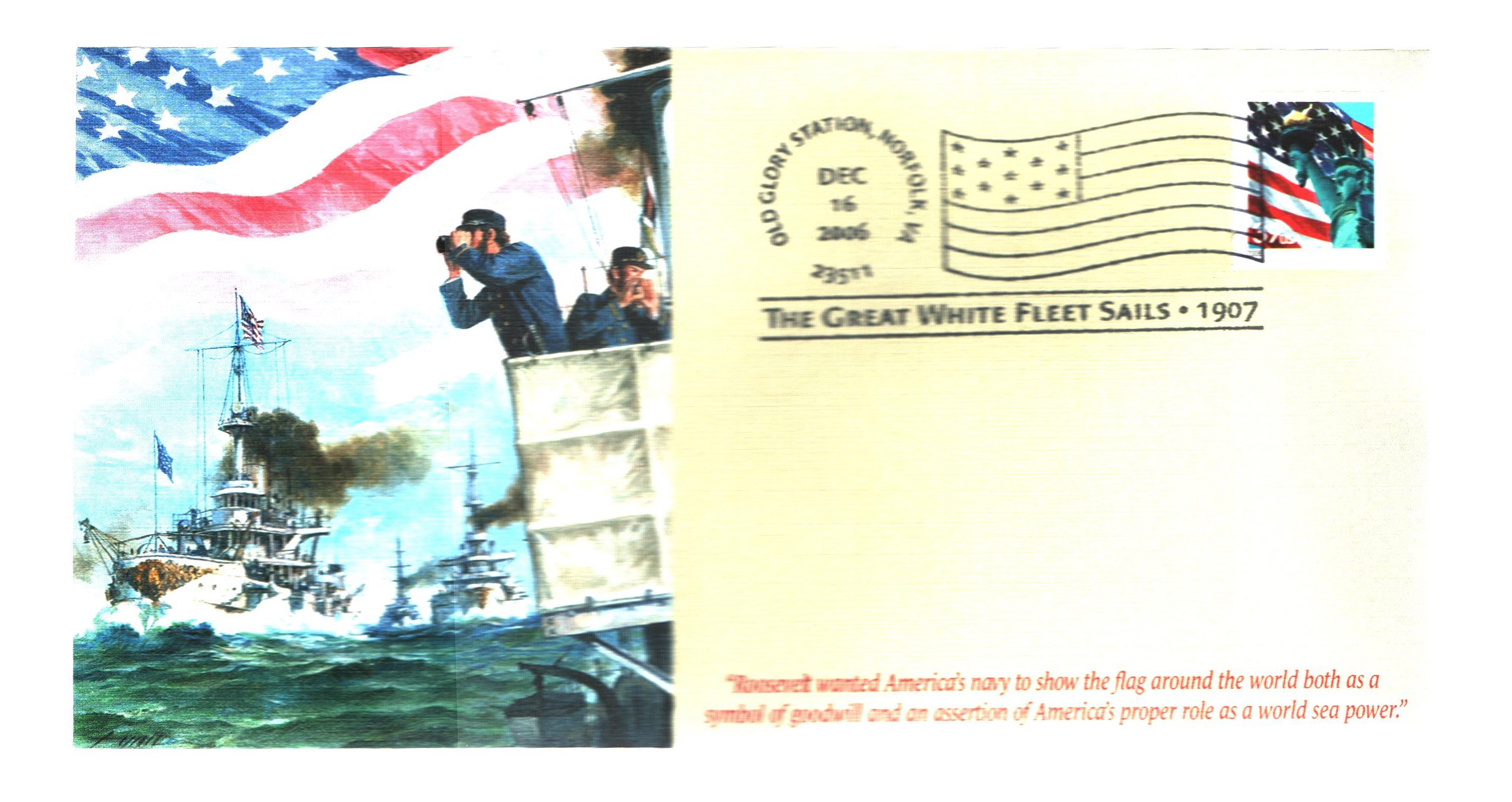
As the fleet made its way around the world, groups greeted them in the thousands at every port. They stopped in California in May 1908 and the officers were treated to a grand ball. In Japan, the fleet was greeted with a large friendly welcome, as the Japanese wanted to show their desire for peace.
The Great White Fleet returned to Hampton Roads, Virginia, on February 22, 1909. Roosevelt was again present for the ceremony and stated “Other nations may do what you have done, but they’ll have to follow you.â€
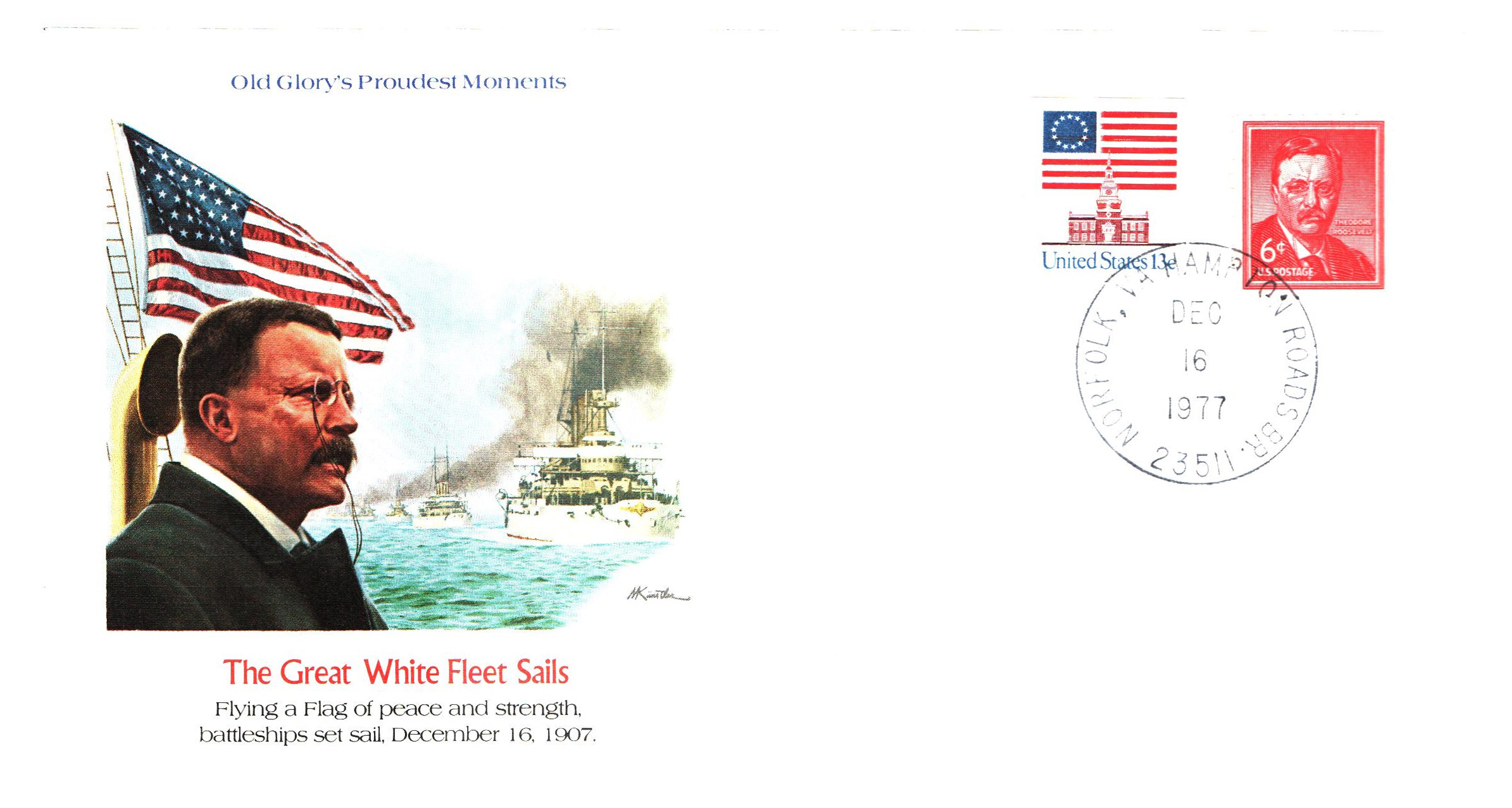
In all, the fleet consisted of four squadrons manned by 14,000 sailors and Marines commanded by Rear Admiral Robley “Fighting Bob†Evans. Over the course of 14 months, they traveled 43,000 miles and made 20 port calls on six continents. The journey of the Great White Fleet is often considered one of the greatest peacetime efforts of the US Navy.
Click here for photos and more detailed account of the journey.
Â
Roosevelt’s Great White FleetÂ

On December 16, 1907, Theodore Roosevelt’s Great White Fleet departed the United States for a 434-day journey around the globe to demonstrate America’s sea power.
The practice of sending naval ships to other countries wasn’t a new one. It was common practice in the 1800s to send ships for the birthdays of monarchs or other foreign celebrations.
In the case of the Great White Fleet, Roosevelt had many reasons. He wanted to show the US and the world that America was a major sea power. Additionally, since Japan had recently emerged as another significant sea power, he wanted the fleet to demonstrate to them that America’s Navy could go anywhere from any of its ports to defend the nation’s interests. On the home front, Roosevelt hoped the fleet would distract Americans from the economic depression at the time and rouse patriotism. The journey would also give the fleet more experience in navigation, communication, coal use, and maneuvering.

The Great White Fleet consisted of 16 battleships and several auxiliary ships. The ships were painted white with gilded bows. On December 16, 1907, President Roosevelt oversaw the fleet’s departing from Hampton Roads, Virginia. Roosevelt stood on the deck of the presidential yacht Mayflower as the ships passed. Many more people watched from the shore as the song “The Girl I Left Behind Me†played.
Interestingly, Roosevelt hadn’t made his plan for the fleet to travel the globe public until shortly after the fleet departed. Once other nations learned of this, they quickly sent invitations for the fleet to visit their ports. The fleet first went to the South Atlantic and made its first visit at Port of Spain in Trinidad on December 23. On January 6, the fleet crossed the equator and ships held a number of costumed initiation ceremonies.

As the fleet made its way around the world, groups greeted them in the thousands at every port. They stopped in California in May 1908 and the officers were treated to a grand ball. In Japan, the fleet was greeted with a large friendly welcome, as the Japanese wanted to show their desire for peace.
The Great White Fleet returned to Hampton Roads, Virginia, on February 22, 1909. Roosevelt was again present for the ceremony and stated “Other nations may do what you have done, but they’ll have to follow you.â€

In all, the fleet consisted of four squadrons manned by 14,000 sailors and Marines commanded by Rear Admiral Robley “Fighting Bob†Evans. Over the course of 14 months, they traveled 43,000 miles and made 20 port calls on six continents. The journey of the Great White Fleet is often considered one of the greatest peacetime efforts of the US Navy.
Click here for photos and more detailed account of the journey.







